Combining Green Metrics and Digital Twins for Sustainability Planning and Governance of Smart Buildings and Cities
Abstract
1. Introduction
2. Methodology and Structure of the Contribution
3. Defining the Metrics
3.1. Lack of Common Green Terminology, Metrics, Data, and Policy
- Government-stipulated
- –
- Energy Star.
- –
- National Australian Built Environment Rating System (NABERS).
- Private Sector-led
- –
- Leadership in Energy and Environmental Design (LEED).
- –
- International Living Future Institute’s Living Building Challenge (LBC).
- –
- Building Research Establishment Environmental Assessment (BREEAM).
- –
- WELL Building Standard.
- –
- GreenGuard.
- –
- Green Star.
- Public–private partnership
- –
- National Green Building Standard (NGBS).
- –
- Green Building Initiate (GBI) and American National Standards Institute’s (ANSI) GREEN Globes.
- –
- International Code Council’s International Green Construction Code (IgCC).
- –
- Comprehensive Assessment System for Built Environment Efficiency (CASBEE).
- –
- ANSI/ASHRAE/USGBC/IES Standard 189.1-2014: Standard for the Design of High-Performance Green Buildings Except Low-Rise Residential Buildings (ASHRAE 189.1).
3.2. Observations on Barriers to Green Best Practices
3.3. Recommendations for Green Metrics Developments and an Example
4. Digital Twin Technology for Sustainability Planning
4.1. Digital Twins and Sustainability Planning
4.2. Planning Efficient Use and Design
4.3. Identification of Infrastructure Requirements and Enhancements
4.4. Optimizing Operational Planning and Execution
- As the simulation predicts the usual trajectory through the city system states, anomalies can be detected by comparing predicted and observed behaviors. This allows timely remedial actions in case of a fault, error, or an emergent unfavorable development.
- As discussed in [46], the approach augments data-driven forecasting, as enabled by machine learning approaches and by knowledge-driven prognosis, as the simulation system explicitly represents functional dependencies so that results are easier to explain.
- In the case of malfunctions of buildings or smart devices, the simulation can quickly be used to reconfigure the physical systems. As such, the digital twins can contribute to contingency plans as well as ensuring sustainability in the events of natural or manmade disasters.
- Merging big data analytics with the concepts of digital twins allows for the calibration of the digital twins with real-world insights as well as applying the same analysis tools to provide insights from the simulation to the planners and decision-makers. This includes massive simulations to better cope with uncertainties and their effects, as well as providing multiple alternative views, based on different prediction models, that help to identify stable solutions.
- In addition to these specific methods, using the approach described here allows one to utilize the full toolset to support the governance of complex systems [1], as envisioned early in our introduction.
5. A Metrics-Driven Framework for Sustainability Planning
5.1. A Method for Providing Computational Decision Support
5.2. Use Case One—Sustainable Data Centers
- Planning and implementation: Building of new data centers or upgrading existing ones allows for the examination of the effects on sustainability throughout the planning process.
- Operations and maintenance: Monitoring a data center 24/7 allows inefficiencies to be discovered and ensures that the data center continues to fall within its performance criteria throughout day-to-day operations.
- Expansion and evolution: New sustainable practices implemented in the digital twin allow for the examination of the new practices to ensure the system behaves as expected, and help to uncover potential second- and third-order effects.
5.3. Use Case Two—Enhancing Sustainability on a University Campus Complex
5.4. Future Developments
6. Conclusions
7. Discussion
Author Contributions
Funding
Institutional Review Board Statement
Informed Consent Statement
Data Availability Statement
Acknowledgments
Conflicts of Interest
References
- Keating, C.B.; Katina, P.F.; Bradley, J.M. Complex system governance: Concept, challenges, and emerging research. Int. J. Syst. Syst. Eng. 2014, 5, 263–288. [Google Scholar] [CrossRef]
- Filip, F. Decision support and control for large-scale complex systems. Annu. Rev. Control 2008, 32, 61–70. [Google Scholar] [CrossRef]
- Seto, K.C.; Dhakal, S.; Bigio, A.; Blanco, H.; Delgado, G.C.; Dewar, D.; Huang, L.; Inaba, A.; Kansal, A.; Lwasa, S.; et al. Human settlements, infrastructure and spatial planning. In Climate Change 2014: Mitigation of Climate Change; Contribution of Working Group III to the Fifth Assessment Report of the Intergovernmental Panel on Climate Change; Cambridge University Press: Cambridge, UK, 2014; pp. 923–1000. [Google Scholar] [CrossRef]
- Steeneveld, G.J.; Koopmans, S.; Heusinkveld, B.; Van Hove, L.; Holtslag, A. Quantifying urban heat island effects and human comfort for cities of variable size and urban morphology in the Netherlands. J. Geophys. Res. Atmos. 2011, 116, JD015988. [Google Scholar] [CrossRef]
- Grieves, M.; Vickers, J. Digital twin: Mitigating unpredictable, undesirable emergent behavior in complex systems. In Transdisciplinary Perspectives on Complex Systems; Springer: Cham, Switzerland, 2017; pp. 85–113. [Google Scholar] [CrossRef]
- Clemen, T.; Ahmady-Moghaddam, N.; Lenfers, U.A.; Ocker, F.; Osterholz, D.; Ströbele, J.; Glake, D. Multi-Agent Systems and Digital Twins for Smarter Cities. In Proceedings of the 2021 ACM SIGSIM Conference on Principles of Advanced Discrete Simulation, Virtual, 31 May–2 June 2021; pp. 45–55. [Google Scholar] [CrossRef]
- Nåfors, D.; Johansson, B.; Gullander, P.; Erixon, S. Simulation in hybrid digital twins for factory layout planning. In Proceedings of the Winter Simulation Conference, Virtual, 14–18 December 2020; pp. 1619–1630. [Google Scholar] [CrossRef]
- Ketzler, B.; Naserentin, V.; Latino, F.; Zangelidis, C.; Thuvander, L.; Logg, A. Digital twins for cities: A state of the art review. Built Environ. 2020, 46, 547–573. [Google Scholar] [CrossRef]
- Shahat, E.; Hyun, C.T.; Yeom, C. City Digital Twin Potentials: A Review and Research Agenda. Sustainability 2021, 13, 3386. [Google Scholar] [CrossRef]
- Fera, M.; Greco, A.; Caterino, M.; Gerbino, S.; Caputo, F.; Macchiaroli, R.; D’Amato, E. Towards digital twin implementation for assessing production line performance and balancing. Sensors 2019, 20, 97. [Google Scholar] [CrossRef]
- Ogden, D. Making Digital Twins a Reality-Waste Water Case Study. In Proceedings of the Utility Management Conference 2022, Orlando, FL, USA, 21–24 February 2022; Water Environment Federation: Alexandria, VA, USA, 2022. [Google Scholar] [CrossRef]
- Bhatti, G.; Mohan, H.; Singh, R.R. Towards the future of smart electric vehicles: Digital twin technology. Renew. Sustain. Energy Rev. 2021, 141, 110801. [Google Scholar] [CrossRef]
- Pribyl, O.; Svitek, M. System-oriented approach to smart cities. In Proceedings of the 2015 Photonics North, Ottawa, ON, Canada, 9–11 June 2015; pp. 1–8. [Google Scholar] [CrossRef]
- U.S. Department of Veterans Affairs. Sustainable Design Manual. 2017. Available online: https://www.cfm.va.gov/til/sustain/dmSustain.pdf (accessed on 22 June 2022).
- Jones, D.A.; Willness, C.R.; Madey, S. Why are job seekers attracted by corporate social performance? Experimental and field tests of three signal-based mechanisms. Acad. Manag. J. 2014, 57, 383–404. [Google Scholar] [CrossRef]
- Whelan, T.; Fink, C. The Comprehensive Buisness Case for Sustainability. 2016. Available online: https://hbr.org/2016/10/the-comprehensive-business-case-for-sustainability (accessed on 22 June 2022).
- Vitaliano, D. Corporate social responsibility and labor turnover. Corp. Gov. 2010, 10, 563–573. [Google Scholar] [CrossRef]
- Holt, E.; Corrado, C. Emerging Trends in Green Best Practices. In Proceedings of the 2021 IEEE International Symposium on Technologies for Homeland Security (HST), Virtual, 8–9 November 2021; pp. 1–5. [Google Scholar] [CrossRef]
- DeLong, S.; Tolk, A. Sustainability Computing and Simulation: A Literature Survey. In Proceedings of the Winter Simulation Conference, Phoenix, AZ, USA, 12–15 December 2021. [Google Scholar] [CrossRef]
- Dembski, F.; Wössner, U.; Letzgus, M.; Ruddat, M.; Yamu, C. Urban Digital Twins for Smart Cities and Citizens: The Case Study of Herrenberg, Germany. Sustainability 2020, 12, 2307. [Google Scholar] [CrossRef]
- Carvalho, R.; da Silva, A.R. Sustainability Requirements of Digital Twin-Based Systems: A Meta Systematic Literature Review. Appl. Sci. 2021, 11, 5519. [Google Scholar] [CrossRef]
- Ivanov, S.; Nikolskaya, K.; Radchenko, G.; Sokolinsky, L.; Zymbler, M. Digital Twin of City: Concept Overview. In Proceedings of the 2020 Global Smart Industry Conference (GloSIC), Chelyabinsk, Russia, 17–19 November 2020; pp. 178–186. [Google Scholar] [CrossRef]
- Sharma, D.; Rao, S. Scheduling computing loads for improved utilization of solar energy. Sustain. Comput. Inform. Syst. 2021, 32, 100592. [Google Scholar] [CrossRef]
- U.S. Green Building Council. LEED Score Card. 2021. Available online: https://https://www.usgbc.org/leed-tools/scorecard (accessed on 26 December 2021).
- Porat, R.; Hölzle, U. Google Environmental Report 2020. Available online: https://www.gstatic.com/gumdrop/sustainability/google-2020-environmental-report.pdf (accessed on 22 June 2022).
- Jackson, L. Apple Environmental Progress Report. 2020. Available online: https://www.apple.com/euro/environment/pdf/a/generic/Apple_Environmental_Progress_Report_2020.pdf (accessed on 22 June 2022).
- Sharplaunch. Top 11 Green Building Certifications. 2020. Available online: https://www.sharplaunch.com/blog/green-building-certifications/ (accessed on 22 June 2022).
- U.S. Environmental Protection Agency. Energy Policy Act of 2005. Available online: https://www.govinfo.gov/content/pkg/PLAW-109publ58/html/PLAW-109publ58.htm (accessed on 26 July 2022).
- U.S. Environmental Protection Agency. Summary of the Energy Independence and Security Act. 2007. Available online: https://www.epa.gov/laws-regulations/summary-energy-independence-and-security-act (accessed on 26 July 2022).
- U.S. Federal Government. Executive Order 13693, Planning for Federal Sustainability in the Next Decade. 2015. Available online: https://www.epa.gov/greeningepa/executive-order-13693-planning-federal-sustainability-next-decade (accessed on 26 July 2022).
- U.S. Federal Government. Executive Order 13834 Regarding Efficient Federal Operations. 2018. Available online: https://www.epa.gov/fgc/executive-order-13834-regarding-efficient-federal-operations (accessed on 26 July 2022).
- U.S. Federal Government Council on Environmental Quality. Guiding Principles for Sustainable Federal Buildings and Associated Instructions. 2020. Available online: https://www.sustainability.gov/pdfs/guiding_principles_for_sustainable_federal_buildings.pdf (accessed on 26 July 2022).
- U.S. Federal Government. Executive Order on Protecting Public Health and the Environment and Restoring Science to Tackle the Climate Crisis. Available online: https://www.whitehouse.gov/briefing-room/presidential-actions/2021/01/20/executive-order-protecting-public-health-and-environment-and-restoring-science-to-tackle-climate-crisis (accessed on 26 July 2022).
- Simkins, J. Navy Quietly Ends Climate Change Task Force, Reversing Obama Initiative. 2019. Available online: https://www.navytimes.com/off-duty/military-culture/2019/08/26/navy-quietly-ends-climate-change-task-force-reversing-obama-initiative/ (accessed on 26 July 2022).
- U.S. Federal Government. Paris Climate Agreement. 2021. Available online: https://www.whitehouse.gov/briefing-room/statements-releases/2021/01/20/paris-climate-agreement/ (accessed on 26 July 2022).
- U.S. Federal Government. Executive Order on Tackling the Climate Crisis at Home and Abroad. 2021. Available online: https://www.whitehouse.gov/briefing-room/presidential-actions/2021/01/27/executive-order-on-tackling-the-climate-crisis-at-home-and-abroad/ (accessed on 26 July 2022).
- U.S. Federal Government. Executive Order on Rebuilding and Enhancing Programs to Resettle Refugees and Planning for the Impact of Climate Change on Migration. 2021. Available online: https://www.whitehouse.gov/briefing-room/presidential-actions/2021/02/04/executive-order-on-rebuilding-and-enhancing-programs-to-resettle-refugees-and-planning-for-the-impact-of-climate-change-on-migration/ (accessed on 26 July 2022).
- U.S. Environmental Protection Agency. Energy Star. 2021. Available online: https://www.energystar.gov/ (accessed on 26 July 2022).
- Coupry, C.; Noblecourt, S.; Richard, P.; Baudry, D.; Bigaud, D. BIM-Based Digital Twin and XR Devices to Improve Maintenance Procedures in Smart Buildings: A Literature Review. Appl. Sci. 2021, 11, 6810. [Google Scholar] [CrossRef]
- Kang, T. Rule-Based LEED Evaluation Method considering BIM Linkage and Variability. KSCE J. Civ. Eng. 2020, 24, 110–121. [Google Scholar] [CrossRef]
- Alonso, R.; Borras, M.; Koppelaar, R.H.E.M.; Lodigiani, A.; Loscos, E.; Yöntem, E. SPHERE: BIM Digital Twin Platform. Proceedings 2019, 20, 9. [Google Scholar] [CrossRef]
- Nochta, T.; Wan, L.; Schooling, J.M.; Parlikad, A.K. A Socio-Technical Perspective on Urban Analytics: The Case of City-Scale Digital Twins. J. Urban Technol. 2021, 28, 263–287. [Google Scholar] [CrossRef]
- Sacks, R.; Eastman, C.; Lee, G.; Teicholz, P. BIM Handbook: A Guide to Building Information Modeling for Owners, Designers, Engineers, Contractors, and Facility Managers; John Wiley & Sons: Hoboken, NJ, USA, 2018. [Google Scholar] [CrossRef]
- Bickford, J.; Van Bossuyt, D.L.; Beery, P.; Pollman, A. Operationalizing digital twins through model-based systems engineering methods. Syst. Eng. 2020, 23, 724–750. [Google Scholar] [CrossRef]
- Callcut, M.; Cerceau Agliozzo, J.P.; Varga, L.; McMillan, L. Digital Twins in Civil Infrastructure Systems. Sustainability 2021, 13, 11549. [Google Scholar] [CrossRef]
- Tolk, A.; Barry, P.; Doskey, S.C. Using Modeling and Simulation and Artificial Intelligence to Improve Complex Adaptive Systems Engineering. Int. J. Model. Simulation, Sci. Comput. 2022, 13, 2241004. [Google Scholar] [CrossRef]
- Mittal, S.; Rainey, L. Harnessing emergence: The control and design of emergent behavior in system of systems engineering. In Proceedings of the Summer Computer Simulation, Chicago, IL, USA, 26–29 July 2015; pp. 1–10. [Google Scholar] [CrossRef]
- Kaewunruen, S.; Rungskunroch, P.; Welsh, J. A Digital-Twin Evaluation of Net Zero Energy Building for Existing Buildings. Sustainability 2018, 11, 159. [Google Scholar] [CrossRef]
- Aivaliotis, P.; Georgoulias, K.; Chryssolouris, G. The use of Digital Twin for predictive maintenance in manufacturing. Int. J. Comput. Integr. Manuf. 2019, 32, 1067–1080. [Google Scholar] [CrossRef]
- Rajus, V.S.; Boi-Ukeme, J.; Jiresal, R.S.; Risopatrón, N.A.; Nojedehi, P.; Wainer, G.; O’Brien, L.; Fai, S. Measured Data Reliability for Building Performance and Maintenance. IEEE Instrum. Meas. Mag. 2022, 25, 55–61. [Google Scholar] [CrossRef]
- Papyshev, G.; Yarime, M. Exploring city digital twins as policy tools: A task-based approach to generating synthetic data on urban mobility. Data Policy 2021, 3, e16. [Google Scholar] [CrossRef]
- Deng, T.; Zhang, K.; Shen, Z.J.M. A systematic review of a digital twin city: A new pattern of urban governance toward smart cities. J. Manag. Sci. Eng. 2021, 6, 125–134. [Google Scholar] [CrossRef]
- Al-Sehrawy, R.; Kumar, B. Digital twins in architecture, engineering, construction and operations. A brief review and analysis. In Proceedings of the International Conference on Computing in Civil and Building Engineering, São Paulo, Brazil, 18–20 August 2020; Springer: Cham, Switzerland, 2020; pp. 924–939. [Google Scholar] [CrossRef]
- Deng, M.; Menassa, C.C.; Kamat, V.R. From BIM to digital twins: A systematic review of the evolution of intelligent building representations in the AEC-FM industry. J. Inf. Technol. Constr. (ITcon) 2021, 26, 58–83. [Google Scholar] [CrossRef]
- Qin, M.; Walton, G.; Belarbi, R.; Allard, F. Simulation of whole building coupled hygrothermal-airflow transfer in different climates. Energy Convers. Manag. 2011, 52, 1470–1478. [Google Scholar] [CrossRef]
- Karnama, A.; Bitaraf, E.; Vinuesa, H.R. Organic Data Centers: A Sustainable Solution for Computing Facilities. Results Eng. 2019, 4, 100063. [Google Scholar] [CrossRef]
- Reddy, V.D.; Setz, B.; Subrahmanya, G.; Rao, V.R.K.; Gangadharan, S.G.R.; Aiello, M. Metrics for Sustainable Data Centers. IEEE Trans. Sustain. Comput. 2017, 2, 290–303. [Google Scholar] [CrossRef]
- Danilak, R. Why energy is a big and rapidly growing problem for data centers. Forbes 2017, 15, 12–17. [Google Scholar]
- Masanet, E.; Shehabi, A.; Lei, N.; Smith, S.; Koomey, J. Recalibrating Global Data Center Energy-Use estimates. Sci. Mag. 2020, 368, 984–986. [Google Scholar] [CrossRef]
- Taylor, A.G. DCIM For Dummies, 1st ed.; John Wiley & Sons, Inc.: Hoboken, NJ, USA, 2018. [Google Scholar]
- Ikemoto, S. Future Facilities Interview with Sherman Ikemoto. Available online: https://www.datacenterdynamics.com/en/dcd-talks/dcdtalks-simulation-and-cfd-with-sherman-ikemoto-future-facilities/ (accessed on 22 June 2022).
- Bashroush, R. A Comprehensive Reasoning Framework for Hardware Refresh in Data Centers. IEEE Trans. Sustain. Comput. 2018, 3, 209–220. [Google Scholar] [CrossRef]
- Pickering, L. 10 Ways to Make Your Data Center More Efficient. 2008. Available online: https://www.networkworld.com/article/2283606/10-ways-to-make-your-data-center-more-efficient.html (accessed on 26 July 2021).
- Miyuru, D.; Wen, Y.; Fan, R. Data Center Energy Consumption Modeling-A Survey. IEEE Commun. Surv. Tutorials 2015, 18, 732–794. [Google Scholar] [CrossRef]
- Mavrokapnidis, D.; Katsigarakis, K.; Pauwels, P.; Petrova, E.; Korolija, I.; Rovas, D. A linked-data paradigm for the integration of static and dynamic building data in Digital Twins. In Proceedings of the 8th ACM International Conference on Systems for Energy-Efficient Buildings, Cities, and Transportation, Coimbra, Portugal, 17–18 November 2021; pp. 369–372. [Google Scholar] [CrossRef]
- European Union. Buildings as a Service. 2020. Available online: https://www.baas-project.eu/ (accessed on 22 June 2022).
- Katsigarakis, K.I.; Kontes, G.D.; Giannakis, G.I.; Rovas, D.V. Sense-Think-Act Framework for Intelligent Building Energy Management. Comput.-Aided Civ. Infrastruct. Eng. 2016, 31, 50–64. [Google Scholar] [CrossRef]
- Katsigarakis, K.; Lilis, G.N.; Rovas, D. A cloud IFC-based BIM platform for building energy performance simulation. In Proceedings of the 2021 European Conference on Computing in Construction, Rhodes, Greece, 19–28 July 2021; University College Dublin: Dublin, Ireland, 2021. [Google Scholar] [CrossRef]
- Lilis, G.N.; Giannakis, G.I.; Rovas, D.V. Automatic generation of second-level space boundary topology from IFC geometry inputs. Autom. Constr. 2017, 76, 108–124. [Google Scholar] [CrossRef]
- Lilis, G.; Giannakis, G.; Katsigarakis, K.; Rovas, D. A tool for IFC building energy performance simulation suitability checking. In eWork and eBusiness in Architecture, Engineering and Construction; CRC Press: Boca Raton, FL, USA, 2018; pp. 57–64. [Google Scholar]
- Billger, M.; Thuvander, L.; Wästberg, B.S. In search of visualization challenges: The development and implementation of visualization tools for supporting dialogue in urban planning processes. Environ. Plan. B Urban Anal. City Sci. 2017, 44, 1012–1035. [Google Scholar] [CrossRef]
- United States Environmental Protection Agency. Environment Dataset Gateway. 2019. Available online: https://edg.epa.gov/metadata/catalog/main/home.page (accessed on 26 December 2021).
- Gaur, A.; Lacasse, M.; Armstrong, M. Climate data to undertake hygrothermal and whole building simulations under projected climate change influences for 11 Canadian cities. Data 2019, 4, 72. [Google Scholar] [CrossRef]
- Diallo, S.Y.; Wildman, W.J.; Shults, F.L.; Tolk, A. (Eds.) Human Simulation: Perspectives, Insights, and Applications; Springer Nature: Cham, Switzerland, 2019. [Google Scholar] [CrossRef]
- Macal, C.M.; Collier, N.T.; Ozik, J.; Tatara, E.R.; Murphy, J.T. Chisim: An agent-based simulation model of social interactions in a large urban area. In Proceedings of the Winter Simulation Conference, Gothenburg, Sweden, 9–12 December 2018; pp. 810–820. [Google Scholar] [CrossRef]
- Suarez, E.D.; Demerath, L. The Cyber Creation of Social Structures. In Complexity Challenges in Cyber Physical Systems: Using Modeling and Simulation (M&S) to Support Intelligence, Adaptation and Autonomy; John Wiley & Sons: Hoboken, NJ, USA, 2019; pp. 339–370. [Google Scholar] [CrossRef]
- Dile, E.; Anderson, L. Green Metrics Common Measures of Sustainable Economic Development. International Economic Development Council. 2017. Available online: https://www.iedconline.org/clientuploads/Downloads/edrp/IEDC_Greenmetrics.pdf (accessed on 22 July 2022).
- Marcucci, E.; Gatta, V.; Le Pira, M.; Hansson, L.; Bråthen, S. Digital Twins: A Critical Discussion on Their Potential for Supporting Policy-Making and Planning in Urban Logistics. Sustainability 2020, 12, 10623. [Google Scholar] [CrossRef]
- Gilbert, N.; Ahrweiler, P.; Barbrook-Johnson, P.; Narasimhan, K.P.; Wilkinson, H. Computational modelling of public policy: Reflections on practice. J. Artif. Soc. Soc. Simul. 2018, 21, 3669. [Google Scholar] [CrossRef]
- Rabadjieva, M.; Terstriep, J. Ambition Meets Reality: Mission-Oriented Innovation Policy as a Driver for Participative Governance. Sustainability 2021, 13, 231. [Google Scholar] [CrossRef]
- Manika, S. Mechanisms for innovative-driven solutions in European smart cities. Smart Cities 2020, 3, 28. [Google Scholar] [CrossRef]
- Rainville, A. Green Public Procurement in Mission-Orientated Innovation Systems: Leveraging Voluntary Standards to Improve Sustainability Performance of Municipalities. Sustainability 2022, 14, 8591. [Google Scholar] [CrossRef]
- Allam, Z.; Jones, D.S. Future (post-COVID) digital, smart and sustainable cities in the wake of 6G: Digital twins, immersive realities and new urban economies. Land Use Policy 2021, 101, 105201. [Google Scholar] [CrossRef]
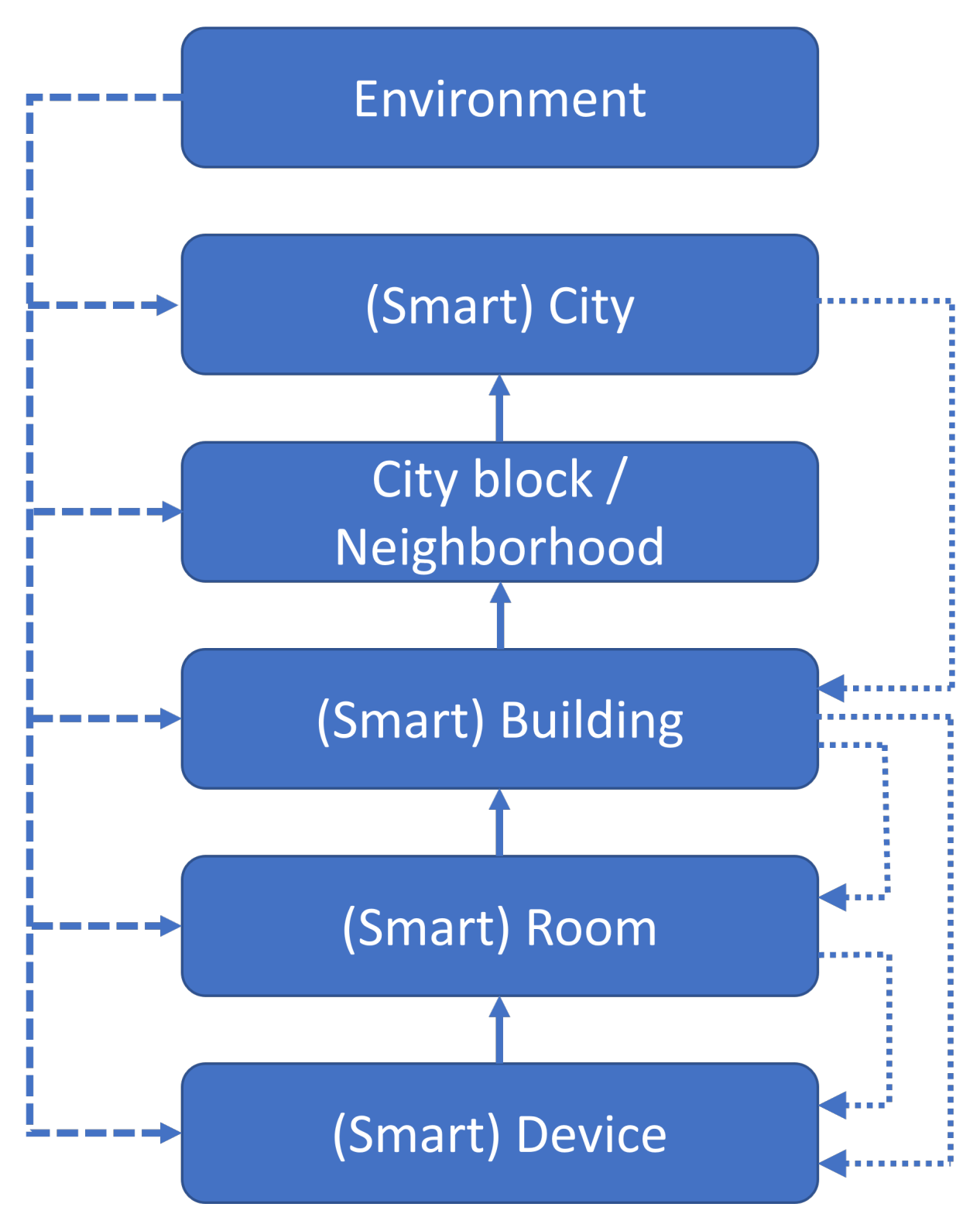
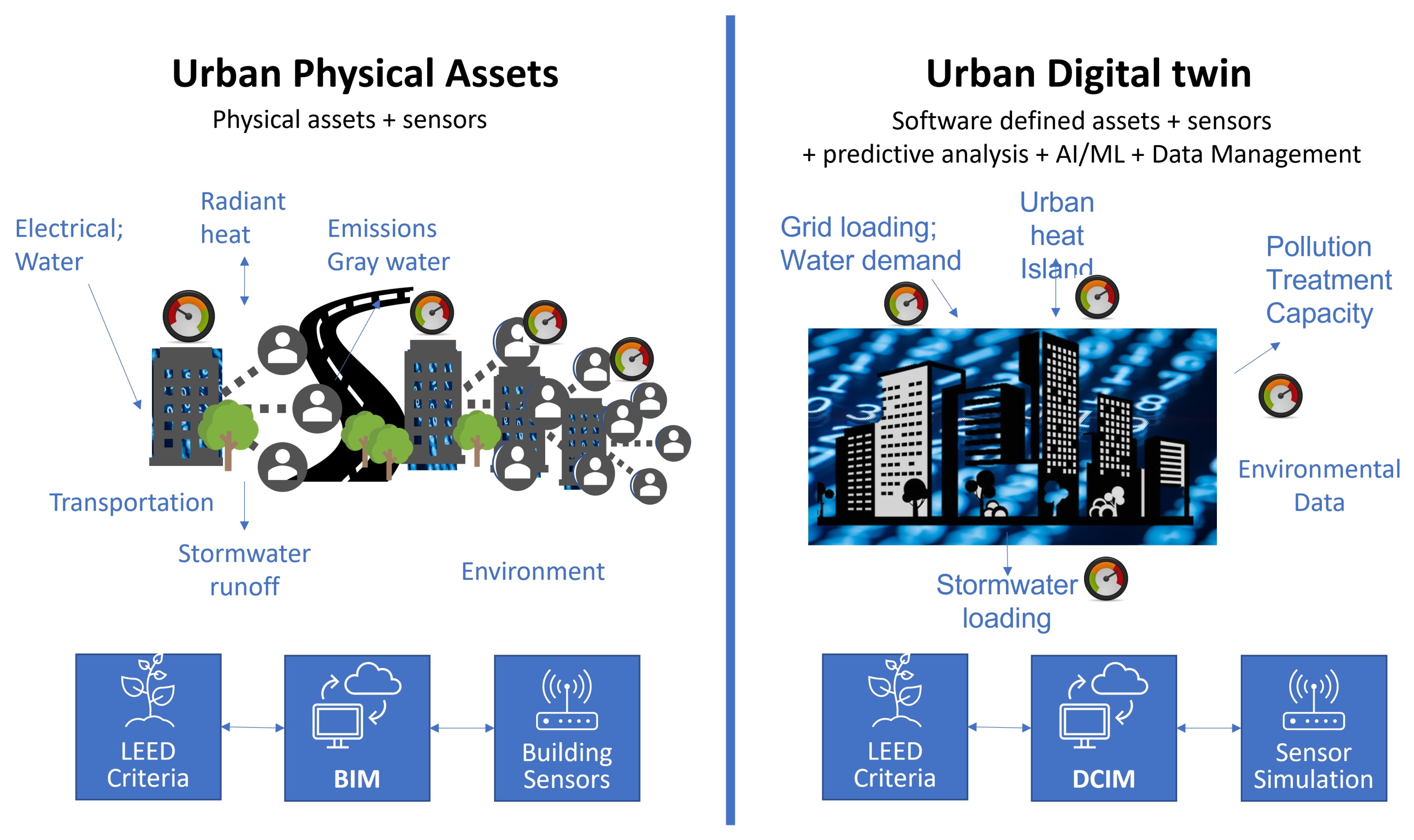
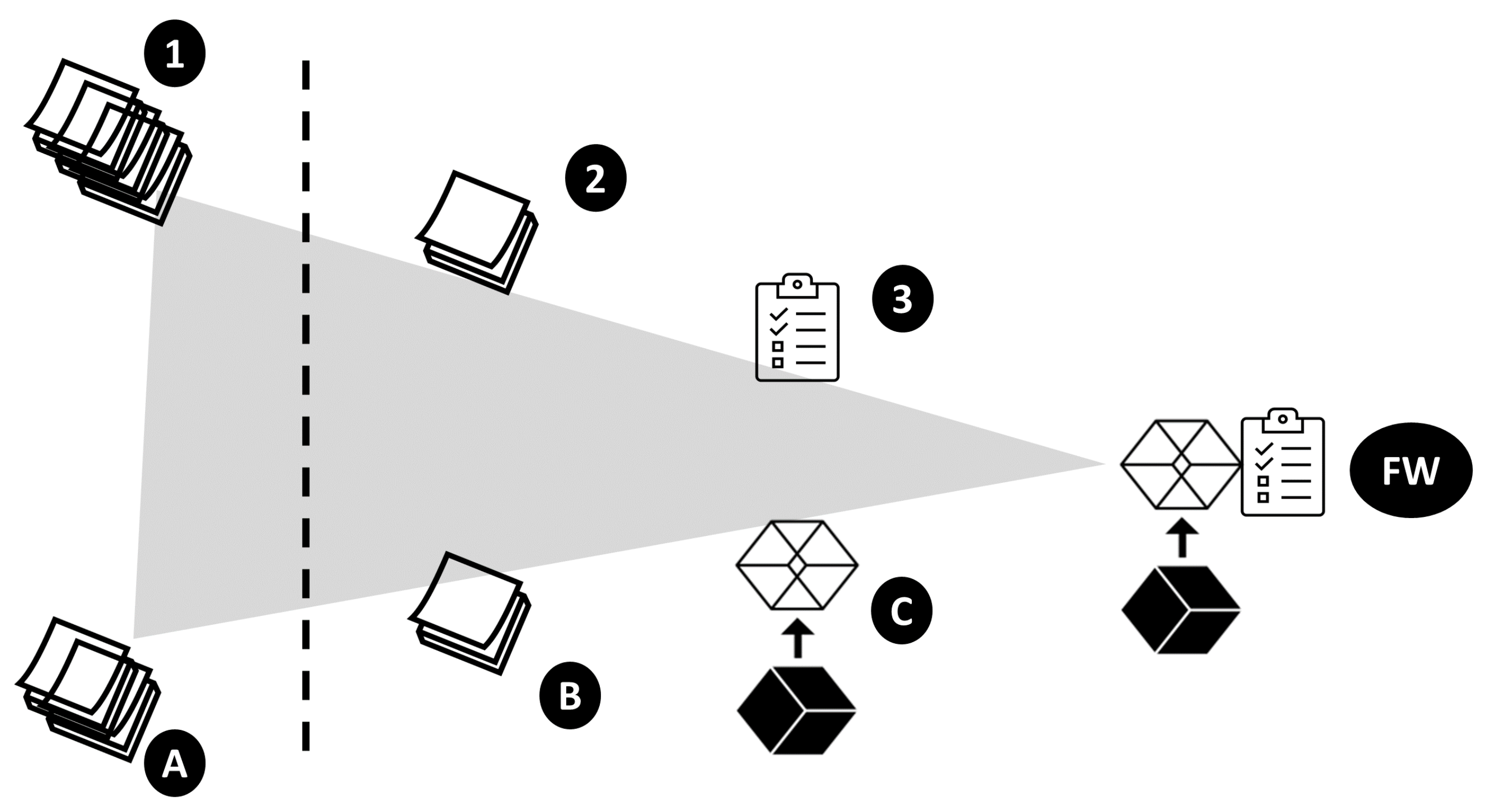
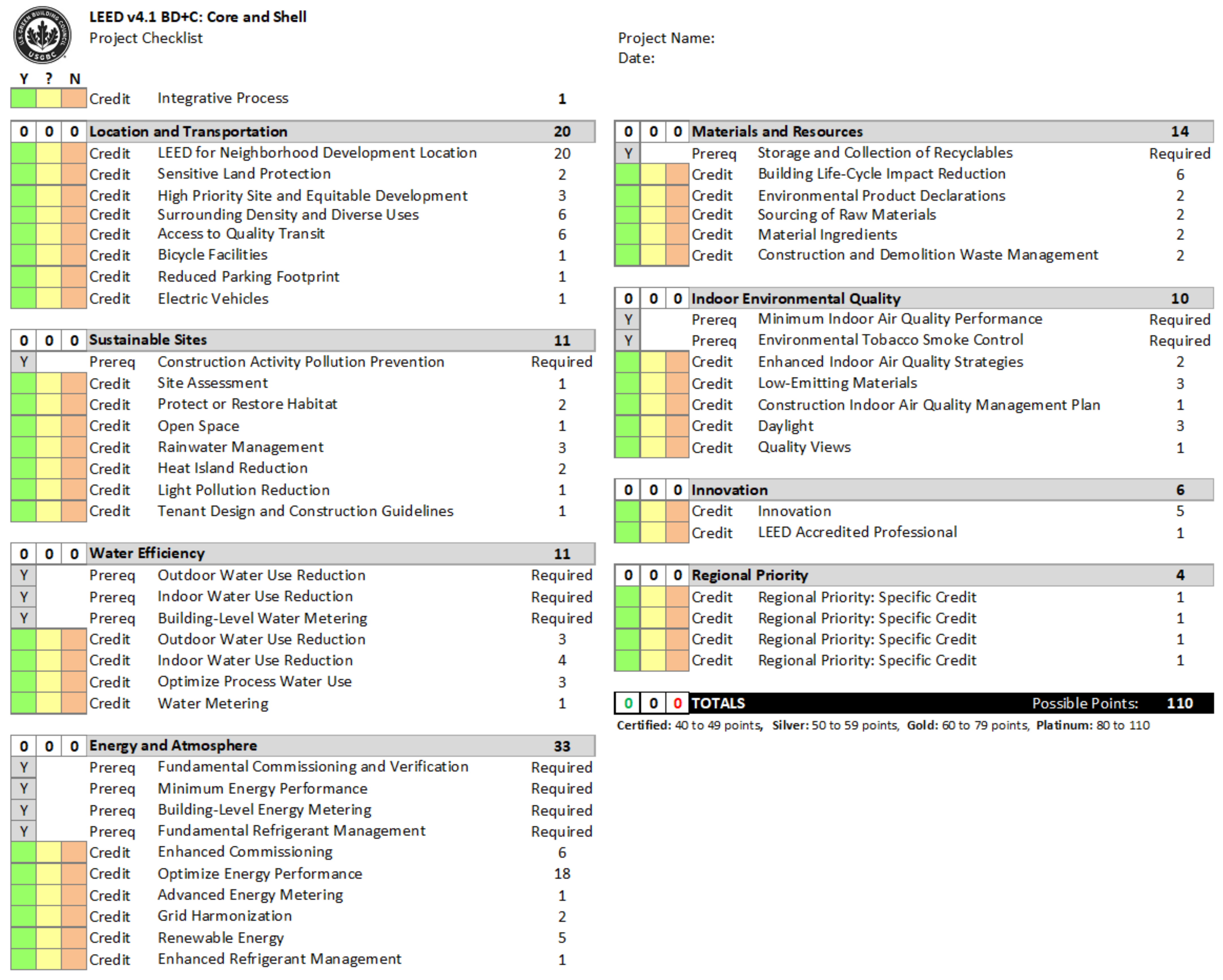
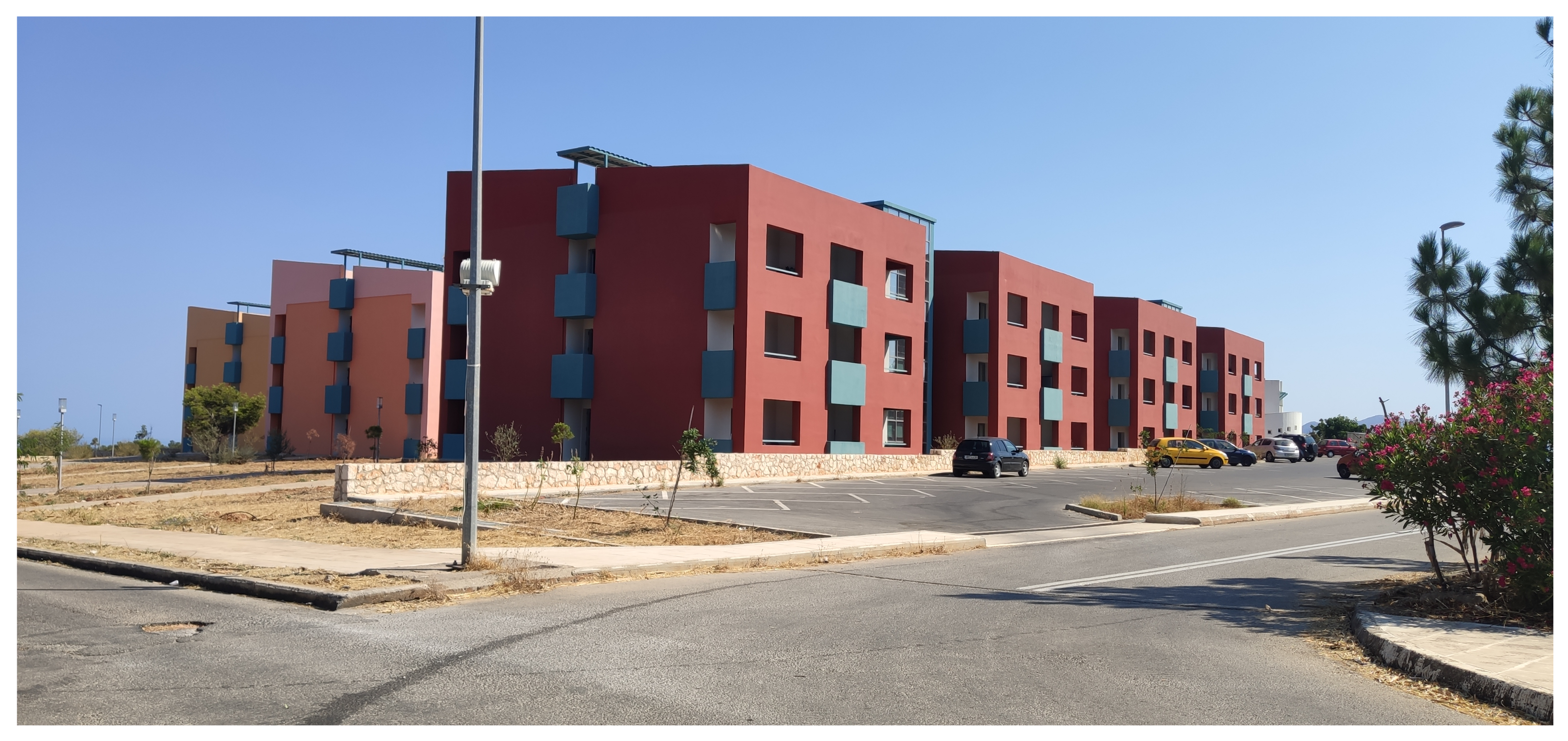
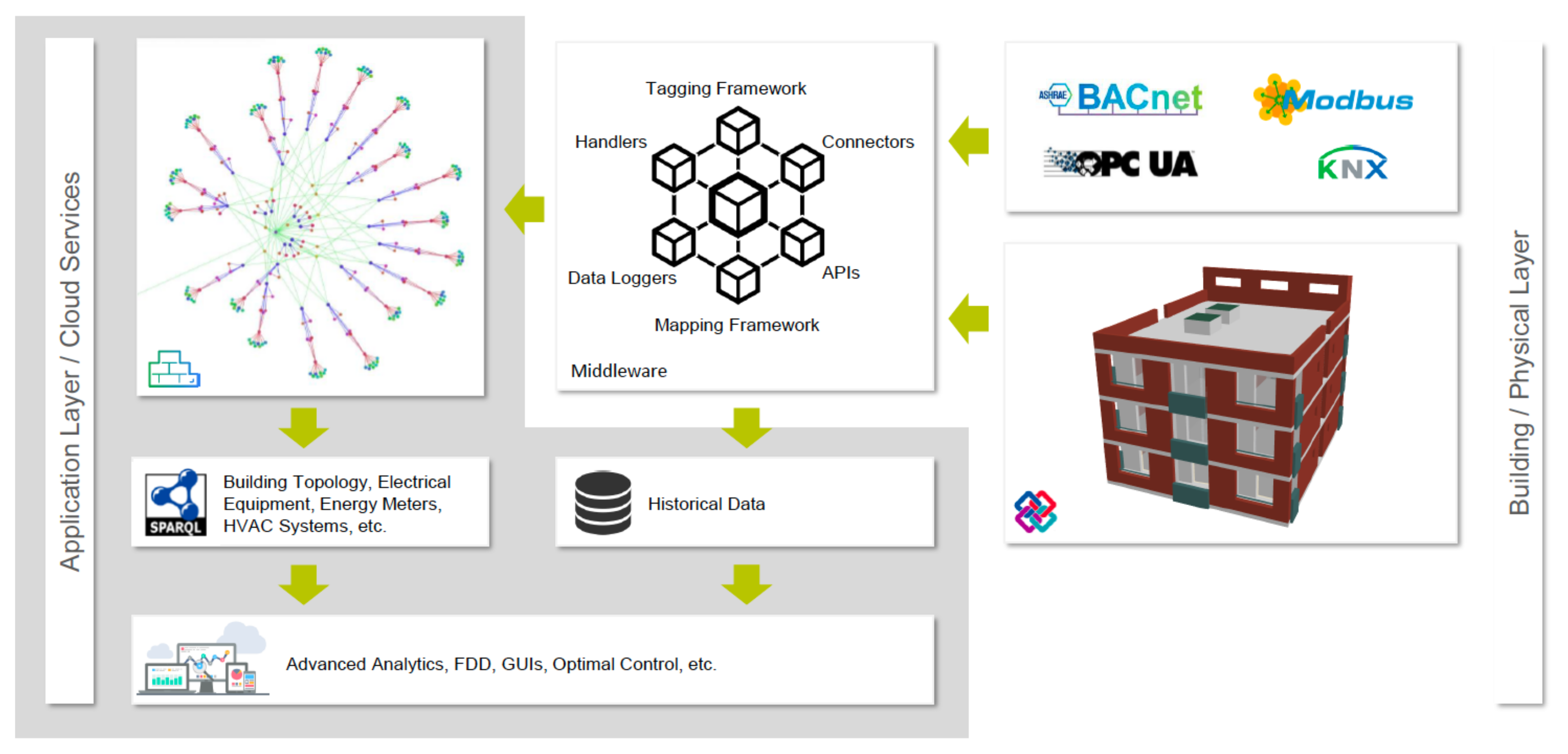
| Dimension | Use | Issues |
|---|---|---|
| Energy Efficiency | These metrics are a series of indicators relevant to the quantitative measure of energy efficiency of a data center and its components. Some metrics are used to know how efficiently a data center transfers power from the source to the IT equipment, and some metrics define IT load versus overhead. | Energy consumption data disaggregated by data center subcomponents may not be available. It is hard to know the number of operating systems and virtual machines running in a data center. |
| Cooling | These metrics characterize the efficiency of the HVAC systems and how well these serve the cooling demand. | It is challenging to determine whether there is adequate underfloor cooling in a consistently advancing environment, where heat densities change within each of the racks as well as from one rack to the next. Data center cooling systems must balance ambient environment with supplemental cooling to optimize efficiency. |
| Greenness | These metrics explain the carbon footprint of the data centers and IT equipment. Additionally, we can assess how much green energy is used, how much energy is exported for reuse, and how efficiently a data center is using water. | Some of these metrics require seasonal benchmarking to capture region and season changes. |
| Performance | These metrics measure the productivity of a data center, effectiveness in delivering service, and agility in responding dynamically to change. | ”Useful computing work” is not defined uniquely. Correct base scores may be challenging without the right tools. |
| Thermal and Air Management | These metrics help us to take care of efficient air flow, temperature issues, and aisle pressure management. | It is difficult to make proper aisle arrangement. For efficient airflow, we must address bypass and recirculation of air flow. |
| Network | These metrics give the data center network energy efficiency, utilization, and traffic demands. | Measuring variable energy varies from one operator to another. Useful work is not defined properly. |
| Storage | Using these metrics, storage operations and performance can be monitored. We obtain better visibility into how proficiently our capacity is being utilized to store client information. | Measuring customer stored data and their criticality is difficult due to data duplication, and the user’s view differs from the storage frame view. |
| Security | These metrics are useful for protecting servers from attacks and they continuously monitor physical and virtual servers and clouds. Further, these metrics cover some basic measurements of firewall performance in a data center. | These metrics are highly dependent on internal governance and compliance standards. |
| Financial Impact | These metrics calculate total cost of ownership, financial impact of data center outages, return on investments on management tools, and technologies for sustainable data centers. | Confidentiality concerns associated with revealing costs for a particular facility. Carbon credit may vary based on the country’s policies. |
Publisher’s Note: MDPI stays neutral with regard to jurisdictional claims in published maps and institutional affiliations. |
© 2022 by the The MITRE Corporation. All Rights reserved. Licensee MDPI, Basel, Switzerland. Submitted to Sustainability for possible open access publication under the terms and conditions of the Creative Commons Attribution (CC BY) license (https://creativecommons.org/licenses/by/4.0/).
Share and Cite
Corrado, C.R.; DeLong, S.M.; Holt, E.G.; Hua, E.Y.; Tolk, A. Combining Green Metrics and Digital Twins for Sustainability Planning and Governance of Smart Buildings and Cities. Sustainability 2022, 14, 12988. https://doi.org/10.3390/su142012988
Corrado CR, DeLong SM, Holt EG, Hua EY, Tolk A. Combining Green Metrics and Digital Twins for Sustainability Planning and Governance of Smart Buildings and Cities. Sustainability. 2022; 14(20):12988. https://doi.org/10.3390/su142012988
Chicago/Turabian StyleCorrado, Casey R., Suzanne M. DeLong, Emily G. Holt, Edward Y. Hua, and Andreas Tolk. 2022. "Combining Green Metrics and Digital Twins for Sustainability Planning and Governance of Smart Buildings and Cities" Sustainability 14, no. 20: 12988. https://doi.org/10.3390/su142012988
APA StyleCorrado, C. R., DeLong, S. M., Holt, E. G., Hua, E. Y., & Tolk, A. (2022). Combining Green Metrics and Digital Twins for Sustainability Planning and Governance of Smart Buildings and Cities. Sustainability, 14(20), 12988. https://doi.org/10.3390/su142012988







